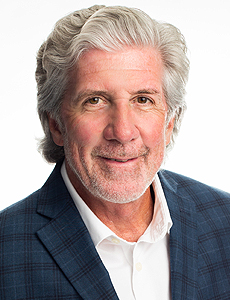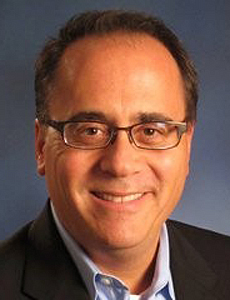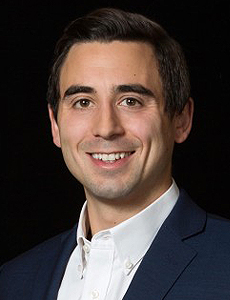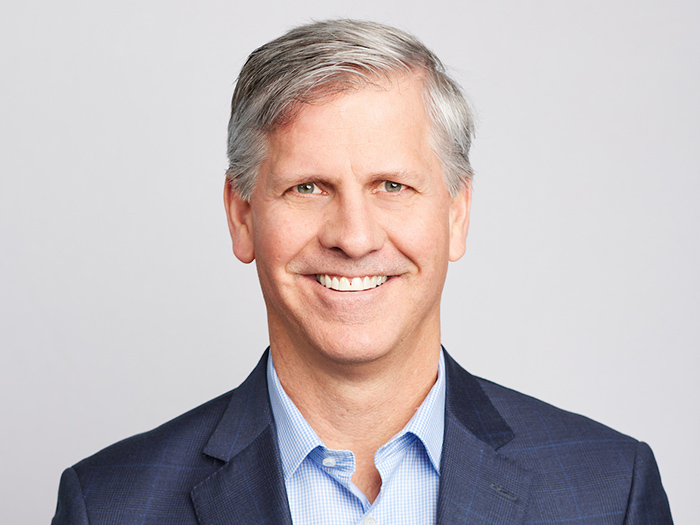At RISKWORLD 2023: Three Sessions Explored Ways to Limit the Toll of Nuclear Claims

Nuclear claims are no longer limited to big cities or specific states. Every jurisdiction now has the potential to host cases with eight- or even nine-figure verdicts, a trend driven by increased litigation funding, the need for tort reform, and social inflation exacerbated by attorney advertising and anti-corporate sentiment.
How to Defuse a Nuclear Bomb
As national VP of liability service for CorVel Ed Burtnette explained, all of the above factors are moot until they’re seized upon by plaintiffs’ lawyers.
Early in the 2023 RIMS conference — held April 30 to May 3 in Atlanta, Georgia — Burtnette led a short session entitled “Avoiding Nuclear Verdicts in Liability Cases” in which he looked at ways plaintiffs’ lawyers are driving nuclear claims and how carriers and their attorneys can counteract them.
Plaintiffs’ attorneys, Burtnette explained, have turned to appealing to jurors’ outrage rather than to their sympathy: “What’s happening in these kinds of cases is that plaintiffs’ attorneys are getting the jury upset … They’re trying to get the jury to get angry. They’re no longer going for sympathy anymore.”
They also tend to ask for especially large settlements early on, anchoring the conversation around nuclear damages and establishing a baseline for jurors’ expectations. “[Plaintiffs’ attorneys are] blackboarding the figure that they want to make the jury think about for the entire case. We’re seeing more and more of that happening.”

Ed Burtnette, national VP of liability service, CorVel
Burtnette recommended countering this tactic by counseling a defendant to accept responsibility where it’s appropriate to do so — making them seem measured rather than reflexively defensive, giving them the chance to identify where fault does and doesn’t lie, and defusing juror anger.
“If you have some culpability, some responsibility, you have to take some of that responsibility, accept it, try to get in early in the trial that your client provided safe premises or a safe product … What does that do, in accepting that responsibility? It definitely makes the defense appear reasonable.”
It can also help to personalize the defendant; corporations are often seen as faceless entities with deep pockets, but when jurors understand a corporation’s actual financial stance and sees its positive contributions to its community and the steps it has taken to protect its employees’ wellbeing, that can help to lower damages. “Talk about the corporation with good news, like ‘This corporation, they’re very involved in the community, customer appreciation’ — get them to personalize the corporate agenda.”
To counter the plaintiffs’ early request for an especially large settlement, Burtnette says, the defendant must provide a more reasonable offer supported by concrete evidence of the plaintiff’s expected costs. By offering this number, a defendant may diminish plaintiff counsel’s anchoring effect.
“[Defense counsel should] give that defense number so the jurors feel comfortable with not giving a high award to a plaintiff for pain and suffering. The plaintiff is going to continue to use their number to the jury, so you want to make sure defense counsel has provided a number that they feel comfortable that they can win with the jury … You want to make sure that you’re putting together appropriate value and that that’s the figure that’s getting put on the whiteboard in front of the jury,” Burtnette said.
“Give it early, give it often, and it must never go up.”
Pain and suffering can be more difficult to assign a dollar amount to than medical care or lost wages, but “that’s the bigger part of what’s coming through in these verdicts,” Burtnette said. “It’s the non-economic losses that are coming out to support these large verdicts.” And pain and suffering can be especially difficult for jurors to quantify.
To keep pain and suffering damages reasonable, Burtnette further suggests asking jurors to consider the impact their award would have on the plaintiffs’ life and remind them that the trial is more than just a mental exercise.
“Normally, it’s [looking at] the impact of the accident on the plaintiff’s life, and the impact of the money on the plaintiff’s life. Educate your jury and remind them, ‘This is real life.'”
Against the Tide of Social Trends

Allen Kirsh, SVP, head of claims, Judicial and Legislative Affairs, Zurich North America
In a May 3 session entitled “Antisocial Behavior: How Social Trends Are Causing Nuclear Verdicts and How Corporations and Their Insurers Can Fight Back,” Allen Kirsh, SVP, head of claims, Judicial and Legislative Affairs, Zurich North America, examined some of the causes driving social inflation and what can be done to curb them outside of the courtroom.
He was joined by Jeffrey Strege, senior director of risk management at Texas-based Academy Sports + Outdoors.
It’s possible to measure social inflation, Kirsh said, for example by comparing claims losses during a given period to an inflation metric like the Consumer Price Index. From 2017 to 2021, the CPI rose 10.5%, Kirsh noted, while during the same period, P&C general liability-incurred losses rose 57.4%.
While there are several factors behind this trend, they ultimately come down to public perception.
Something as simple as seeing a billboard or TV spot from a plaintiffs’ lawyer where they take credit for a multimillion-dollar jury award may lead people to believe that these sums are normal and reasonable for a civil lawsuit. These ever-rising awards then further acclimatize future juries to nuclear verdicts.
“Advertising ties into all this in a couple of ways,” Kirsh noted. “I think that it promotes the use of attorneys when someone is injured, regardless of whether they’re going to do better or not. Also, a lot of these ads really focus on large verdicts and large values for cases … And you’re also telling them ‘That’s an insurance company,’ which they wouldn’t hear in the jury trial.”
Kirsh also named litigation funding as a driver of nuclear verdicts and pointed out that the practice is currently largely unregulated. Even something as simple as requiring disclosures so that people understand investors have a stake in a plaintiff’s claim — and that they can take as much of a plaintiff’s award as they want — may help to moderate their perceptions.
“With litigation funding, the way to deal with this is through legislation,” Kirsh said.
“We’ve been part of an industry coalition focused on third-party litigation funding to get legislation passed throughout the country. There’s about six or seven jurisdictions right now that have passed legislation. And what we’re looking for is mandatory disclosure so they have to tell you up front if there’s litigation financing — produce the documents — so you know what you’re dealing with.
“But we also want caps on rates,” Kirsh added. “Some of these rates are just purely predatory. From a consumer protection angle, it can make sense … You also have a regulatory scheme, looking for conflicts of interest, things like that.”
Counteracting social inflation may ultimately come down to tort reform, which takes place at the state level, making it a battle with different rules of engagement across dozens of different fronts. But as Kirsh said, it may be necessary in order to return the civil justice system to its original intended purpose of compensating the injured parties of wrongful acts.
“Tort laws have been eroding across the country,” Kirsh said. “And certain jurisdictions are obviously worse than others. The plaintiffs’ bar is extremely well-organized, extremely well-funded. They’re heavily invested in these jurisdictions. They’re heavily invested in judicial races, legislative races, lobbying legislators to change laws to make it easier for them, and make it more lucrative for them as attorneys, and they’ve been quite successful.”
But even legislative reform begins with changing public perception — shifting the narrative that plaintiffs’ attorneys have so far controlled. Customers need to understand that “insurance is the oil in the engine that makes capitalism work,” as Kirsh has previously stated, and insurance companies are not the villain in the process of making victims of negligence whole again.
“Jurors feel that their role is a little bit different than it used to be,” Kirsh said. “Now, they view themselves as more protectors of society and of their community, as opposed to just individuals who are evaluating the facts, the evidence, the arguments and applying law, so they have an expanded view of that.”
This attitude gives an advantage to plaintiffs’ attorneys relying on “reptile theory” — the idea that people are motivated most strongly by the emotions of fear and anger. Like Burtnette, Kirsh advised admitting culpability where it’s appropriate, and focusing on portraying a more positive and three-dimensional portrait of the defendant company.
One important way to do this is through a pre-existing focus on safety, which both avoids many claims in the first place — “The cheapest claim is the one you never have,” Strege said — and also, in the event of an accident, helps defendants prove that they took every reasonable measure to prevent it. This goes a long way in demonstrating that there was no egregious negligence on the defendant’s part.
While plaintiffs’ attorneys will attempt to stoke rage by saying that the company “didn’t care” about its employees’ or customers’ safety, an demonstrable safety program that proves an organization takes wellbeing seriously can deflate this type of attack.
“What I tell our leaders all the time, when they ask me about claims management, for example, or they ask me about risk management, I tell them if we don’t have a foundational, proactive culture of safety in our operations, then all the rest of this — I’ll do my best to clean up the mess, but we’ve got to have a proactive culture of safety,” Strege said. “Safety drives resilience, right? We hear that word a lot now in our industry and in our field, and rightfully so.”
Bringing Your A-Game to Subrogation Negotiations
In an earlier May 3 session at RIMS, entitled “Nuclear Negotiations Made Simple for Subrogation Cases,” Joey Daryanani (vice president at CSAA Specialized Services, CSAA Insurance Group, a AAA Insurer) and Ashton Kirsch (a shareholder at insurance subrogation law firm Matthiesen, Wickert & Lehrer) shared tips on how to recoup some of the costs of a nuclear payout through better negotiation during subrogation claims — with broad applications to negotiations in general.
As the duo emphasized, the vast majority of subrogation cases are settled before going to trial, making the ability to negotiate before or during the arbitration stage an important arrow in a carrier team’s quiver.
In an hour filled with tips and tricks, Daryanani and Kirsch emphasized a few key strategies proven to produce better negotiation outcomes.

Joey Daryanani, vice president at CSAA Specialized Services, CSAA Insurance Group, a AAA Insurer
One fundamental is to start negotiations with a relational approach. After all, both sides are playing with other people’s money — negotiations don’t have to be taken personally, and being friendly will almost certainly lead to a better result than being adversarial. This can be as simple as making small talk.
“It’s a small industry,” Kirsch said.
“When we negotiate claims, when I’m dealing with adjusters, it’s not the first time I’m going to deal with this person, and probably not the last time. Take the two minutes and just have a conversation — talk about the weather, or if you like golf, talk about golf. Discuss your kids. It makes your communications that much better, no matter what you’re doing. So I always encourage everyone, think about how you can build relationships.”
Just as important is to do your research. This can be crucial when you’re trying to justify the sum of money you’re asking for — the better your evidence to support the claim, the more likely you are to win people over — but it doesn’t end there.
Kirsch and Daryanani suggested rehearsing negotiations in advance, playing the part of your adversary in order to anticipate and get ahead of any arguments they may come up with.
“Knowledge is absolutely critical,” Daryanani said.
“Take the time to investigate your case and be able to argue it properly. Now we know the facts, know the legal basis for the claim … This is not rocket science. It’s just the ability to prepare, take the time to prepare, understand the witness potential of the plaintiff, the defendant, and go negotiate your case … Spend the time ahead of the negotiation to understand what you have in front of you.”
“Review the facts and start thinking it through,” Kirsch concurred. “What I actually do for my practice is, even on a smaller case, I take five minutes getting into my adversary’s shoes, playing devil’s advocate. On large enough cases, I bring in one of my associates; they sit across my desk, and I argue my adversary’s perspective. My associate argues my perspective. And we go through the whole negotiation.”

Ashton Kirsch, shareholder, Matthiesen, Wickert & Lehrer
They also emphasized the importance of listening more than you talk. If winning negotiations is about making sound, well-founded arguments, then the temptation to talk can tip your hand. Listening, on the other hand, is the best way to gain information about your opponents’ case.
“We think we have the best arguments; we need to tell the world, we need to tell the other side,” Kirsch said.
“The problem is they already know what our arguments are. I always encourage my folks to listen 70% of the time and speak 30%. Because in doing so, the amount of stuff I’ve had disclosed to me over the years by just calling up the others — they told me the facts of their case. They’re telling me their whole defense, so that now I know what to argue and what to investigate.”
As Daryanani and Kirsch also advised, it doesn’t hurt to ask. When seeking subrogation, the other party might just surprise you and say yes, handing you an easy victory.
“The backlogs are growing,” Kirsch said. “They want to get that case off their desk. Go ahead and make your demand, and be prepared to understand what you’re actually asking for.”
Kirsch also recommended asking for the largest sum that you can justify — again, because they just might say yes, but also because quirks inherent to the human psyche mean you’re more likely to eventually land on a higher number.
“The reason why we want to ask for as much as possible is because of something called the anchoring and adjustment heuristic. Your adversary is going to use their number as as an anchor point and a start for negotiations, then adjust accordingly. So plaintiff’s attorneys are making a demand on you. This is where we get those crazy million-dollar demands on a case with $15,000 and medicals. Well, this is what they’re doing.”
But as the pair emphasized, that you can justify is the operable phrase; each number should be broken down and backed up with supporting evidence. Asking for more than you’re actually entitled to could backfire in both the short and long term. Always keep your negotiations in good faith, Daryanani said, or risk damaging your relationships — and as previously mentioned, good relationships drive good outcomes. &










